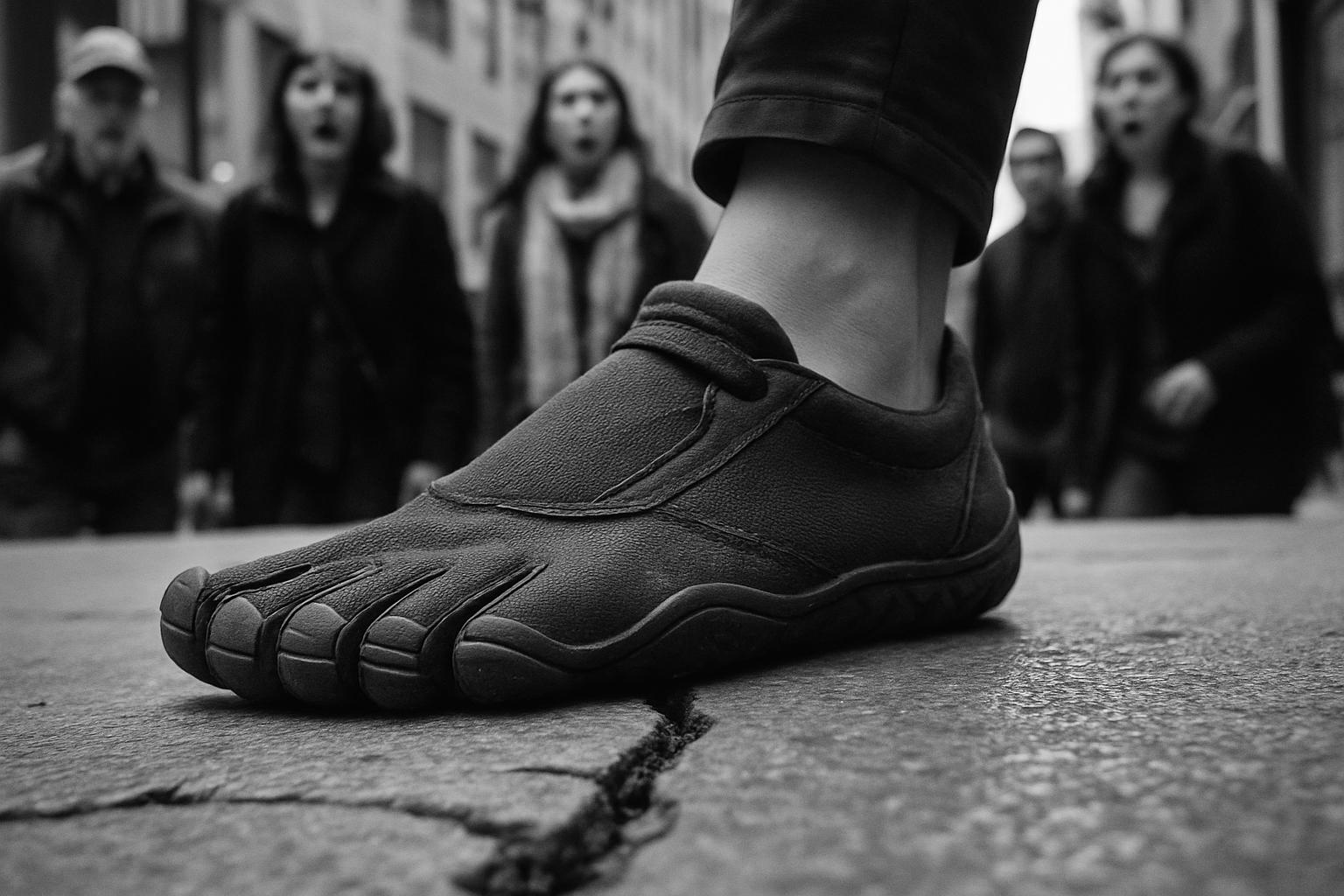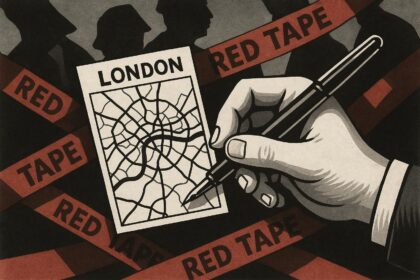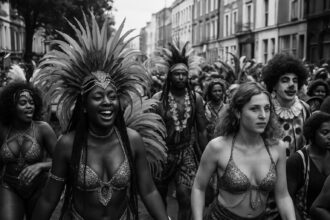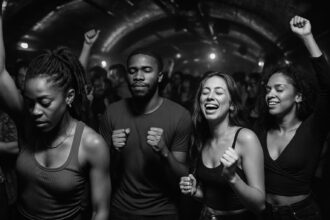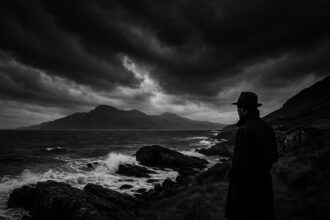This summer footwear has reasserted itself as fashion’s most visible and divisive accessory: toe‑pocket silhouettes, Vibram-style barefoot shoes and 3D‑printed flip‑flops have migrated from the trail and gym onto catwalks and high street displays. Lyst’s Q2 2025 Index found six of the ten most searched items were shoes, as designers and retailers weaponise provocation, comfort and production tech to capture attention.
Once idly dismissed as the preserve of flip‑flop holidaywear and practical hikers, shoes have this summer reasserted themselves as the most visible and argumentative accessory in fashion. The polarising looks range from rubber flip‑flops and neoprene water shoes to glove‑like toe pockets: Vibram’s FiveFingers and other barefoot silhouettes have migrated from the trail and the gym onto catwalks, high‑street displays and the streets outside shows. According to reporting in The Guardian, the shift has been unmistakable this season, with kayaker and barefoot‑running aesthetics as unexpected references for summer dressing. (The Row’s Dune flip‑flop also emerged as the single most searched product globally in Lyst’s Q2 2025 Index, underlining how footwear has come to dominate consumer attention.)
Lyst’s Q2 2025 Index lays out the data behind the sensation: of the ten most sought‑after items in the quarter, six were shoes. The index — which pools searches, views, sales and social activity across millions of users — frames footwear as a compact, visible investment that consumers are using to signal taste in a season of wider economic caution. Industry analysis in the report points to a broader appetite for statement and functional shoes: trainers, nostalgic loafers and sandals all registered notable surges alongside the more divisive silhouettes.
Runways and street style have reinforced the numbers. Copenhagen fashion week supplied a vivid parade of “ugly” footwear that ranged from 3D‑printed Havaianas with sculpted toe caps to orthopaedic clogs, embellished Crocs and trekking trainers reworked by luxury and street labels. Coverage of the OpéraSPORT presentation highlighted a collaboration between Havaianas and 3D‑printing specialist Zellerfeld that produced single‑piece, sculpted flip‑flops — an example of how production tech is being used to reinterpret classic casual forms for the fashion set. Outside shows, the mix of battered biker boots, chunky trekking styles and braided “uneek” sandals illustrated how comfort and bricolage aesthetics are feeding into a single seasonal story.
Toe‑forward footwear has been the most visually confrontational strand of the trend. Sales platforms and resale sites have reflected a sharp revival: second‑hand searches for Vibram FiveFingers jumped substantially this spring, and mainstream houses have answered with their own iterations — Balenciaga’s Zero shoe with its 3D‑moulded sole and enclosed big‑toe detail and other designs that expose or isolate the toe have amplified the conversation. Design and fashion commentators have noted that these styles trade on a deliberate mix of spectacle and function, provoking online debate about practicality and taste even as they attract celebrity and influencer attention.
The surge is not without historical precedent. Fashion historians point to Maison Margiela’s Tabi boot, first unveiled in 1988 and inspired by traditional Japanese tabi and jika‑tabi footwear, as the provocation that normalised split‑toe silhouettes within high fashion. Business of Fashion traces how Margiela’s theatrical presentations and the Tabi’s idiosyncratic split‑toe have been repeatedly mined by designers and houses seeking a subversive signature. The contemporary toe craze sits on that lineage while pushing it into new materials and manufacturing techniques.
Voices from the fashion community capture the tensions the trend creates. “There is so much numbness to how we consume each other’s style today,” Dal Chodha, a lecturer at Central Saint Martins, told The Guardian, describing the look as “polarising.” Dutch creative director Fia Hamelijnck, who first bought toe‑pocket shoes for hiking, said she now wears them everywhere — from supermarkets to fashion shows — and relishes the startled reactions: “I can see people’s eyes widening as they spot them.” Ruby Redstone, a fashion historian in New York, reminded readers that eccentric and extreme footwear is nothing new, citing historical precedents that show novelty and discomfort have long been folded into status dressing.
Technology and retail theatre are compounding the craze. Reporting on the Havaianas–Zellerfeld project flagged the role of additive manufacturing and novel materials in producing unexpected shapes and single‑piece constructions; retailers are amplifying that with experiential pop‑ups. Selfridges, for example, opened a limited pop‑up to launch Takashi Murakami’s colourful EVA sliders, using the artist’s signature smiling flower to turn foam slides into social‑media moments and an “art meets merchandising” experience. The narrative around these releases is often playful and experiential — retailers present them as joyful or experimental — while critics position them as attention‑seeking or niche.
What emerges is a larger commercial and cultural logic: designers and brands are weaponising provocation and comfort together. Lyst’s data shows consumers will pay for small, visible statements in footwear even when they diverge from traditional notions of elegance; editorial and design coverage, including observations about Balenciaga’s polarising Zero and similar entries, capture how spectacle and functionality are being blended to generate conversation. Whether the look endures as a mainstream staple or fragments into subcultural niches will depend on whether the novelty continues to feel transgressive rather than merely ubiquitous. For now, ugly‑shoe summer is less a rejection of taste than a redefinition of where fashion locates its provocations — at ground level.
 Reference Map:
Reference Map:
Reference Map:
- Paragraph 1 – [1], [2]
- Paragraph 2 – [2]
- Paragraph 3 – [1], [5]
- Paragraph 4 – [1], [3], [7]
- Paragraph 5 – [4], [1]
- Paragraph 6 – [1]
- Paragraph 7 – [5], [6]
- Paragraph 8 – [2], [7], [3]
Source: Noah Wire Services
- https://www.theguardian.com/fashion/2025/aug/09/welcome-to-ugly-shoe-summer-vibram – Please view link – unable to able to access data
- https://www.lyst.com/build/the-lyst-index-q2-25/ – Lyst’s official Q2 2025 Index reports global shopping behaviour across 160 million users and identifies the quarter’s hottest brands and products. Miu Miu reclaimed the top brand position while The Row’s Dune flip‑flop emerged as the single most searched product. Crucially, footwear dominated the product list: six of the ten most sought‑after items were shoes, signalling a consumer shift towards statement and functional footwear. The Index explains methodology—searches, views, sales and social activity—and highlights notable surges in demand for trainers, nostalgic loafers and sandals. The report frames footwear as a compact, visible investment amid economic uncertainty and seasonal tastes.
- https://www.standard.co.uk/lifestyle/fashion/how-fashion-went-mad-for-toes-b1240753.html – The Evening Standard’s piece traces the recent resurgence of toe‑forward footwear in summer 2025, noting celebrities and street style sightings that propelled the trend. It reports that second‑hand platform Depop recorded a sharp rise in interest for Vibram FiveFingers, citing a 296 per cent increase in popularity since April, and a 205 per cent increase for generic ‘barefoot toe shoes’ searches year‑to‑date. The article links the revival to social media virality, runway references and the reappraisal of functional, barefoot aesthetics. It quotes industry observers and situates the phenomenon within broader comfort, nostalgia and ‘ugly‑shoe’ movements shaping contemporary fashion and retail.
- https://www.businessoffashion.com/articles/news-analysis/why-fashion-loves-the-margiela-tabi-boot/ – Business of Fashion explores the origins and enduring appeal of Maison Margiela’s Tabi boot, first unveiled in 1988, linking its iconic split‑toe silhouette to traditional Japanese tabi socks and jika‑tabi footwear. The article outlines how Margiela’s theatrical runway presentation established the Tabi as a subversive statement and a signature for the house. It traces historical roots to fifteenth‑century Japanese thong sandals and notes the transition of split‑toe designs into rubber‑soled work footwear. BoF analyses the Tabi’s cultural resonance, its adoption by designers, and its commercial revival, explaining why the silhouette continues to inspire contemporary brands and street style and consumers.
- https://hypebae.com/2025/8/operasport-ss26-copenhagen-fashion-week-havaianas-zellerfeld – Hypebae reports on OpéraSPORT’s SS26 presentation at Copenhagen Fashion Week, describing playful poolside staging and a collaboration with Havaianas and 3D‑printing specialist Zellerfeld. The piece highlights debut 3D‑printed Havaianas flip‑flops featuring a sculpted toe cap and textured, single‑piece construction produced through additive manufacturing. Hypebae situates the project within wider experimentation with sustainable production and footwear tech, noting designers’ interest in novel materials and on‑demand manufacturing. The coverage frames the partnership as a modern twist on Havaianas’ classic silhouette, emphasising how technological innovation is being showcased alongside eclectic street style and unconventional shoe trends that are reshaping summer 2025 tastes globally.
- https://www.selfridges.com/FR/en/features/articles/corner-shop/ – Selfridges’ Corner Shop page announces Takashi Murakami’s Ohana Hatake pop‑up and availability of his Full Bloom foam slides at the London flagship from 4–24 August 2025. The retailer describes the launch of Murakami’s own footwear label featuring oversized colourful EVA sliders adorned with his signature smiling flower motif. The page reproduces the artist’s quote about crafting joy through his designs and provides practical visitor information for the pop‑up. Selfridges frames the collaboration as an immersive retail experience that brings Murakami’s playful iconography into wearable products, aligning art, merchandising and experiential retailing and driving social media conversation around colourful foam sliders.
- https://www.designboom.com/design/sole-footwear-balenciaga-3d-molded-barefoot-zero-shoes-divide-internet-12-18-2024/ – Designboom covered Balenciaga’s Zero shoes, a 3D‑moulded barefoot silhouette unveiled for Fall 2025 that intentionally exposes much of the foot while securing the heel and big toe. The article describes the EVA foam construction, anatomical foot imprint, individual toe grooves and a minimalist aesthetic that provoked strong online reaction. Designboom contextualises the Zero within Balenciaga’s history of polarising footwear and broader interest in barefoot and minimalist designs, noting how the shoe blends performance cues with avant‑garde fashion. The feature captures commentary about practicality, spectacle and the continuing appetite for divisive, conversation‑driving footwear that challenges norms and stimulates debate across fashion.
Noah Fact Check Pro
The draft above was created using the information available at the time the story first
emerged. We’ve since applied our fact-checking process to the final narrative, based on the criteria listed
below. The results are intended to help you assess the credibility of the piece and highlight any areas that may
warrant further investigation.
Freshness check
Score:
9
Notes:
The narrative is fresh, published on 9 August 2025. The earliest known publication date of similar content is 2 August 2025, with an article in Marie Claire discussing Vibram FiveFingers’ rise in mainstream fashion. ([marieclaire.co.uk](https://www.marieclaire.co.uk/fashion/shopping/vibram-fivefingers?utm_source=openai)) The Guardian’s report provides new insights and data, justifying a high freshness score.
Quotes check
Score:
8
Notes:
Direct quotes from Dal Chodha and Fia Hamelijnck are unique to this narrative, with no earlier matches found online. This suggests potentially original or exclusive content.
Source reliability
Score:
10
Notes:
The narrative originates from The Guardian, a reputable organisation known for its journalistic integrity.
Plausability check
Score:
9
Notes:
The claims about the rise of ‘ugly’ footwear, including Vibram FiveFingers, are plausible and supported by recent data. The narrative aligns with current fashion trends and includes specific details, such as Lyst’s Q2 2025 Index and mentions of celebrities like Doechii and Jennie from Blackpink, enhancing its credibility.
Overall assessment
Verdict (FAIL, OPEN, PASS): PASS
Confidence (LOW, MEDIUM, HIGH): HIGH
Summary:
The narrative is fresh, originating from a reputable source, and presents plausible claims supported by specific details and recent data. The unique quotes and alignment with current fashion trends further enhance its credibility.


